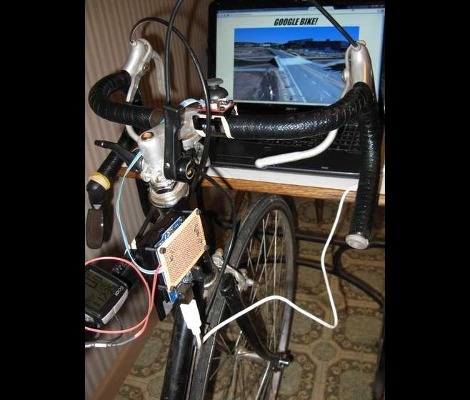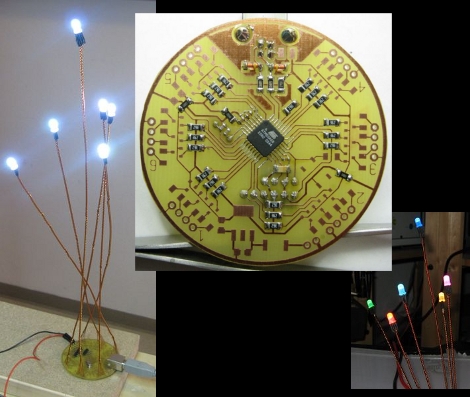
This is becoming such a popular hack we figure someone needs to come up with a name for it like Google-travelling or Google-cising (exercising with Google). It’s a bike controller for Google Earth. [Braingram] broke out his road bike, setting it up in the trainer in front of his laptop. If you already have a computer with a cadence sensor this will be a snap. These measure the crank rotation using a magnet and reed switch. So as not screw up his summer biking [Braingram] spliced into the sensor while leaving it attached to the bike computer. From there it is read by an Arduino which also monitors an analog joystick attached to the handlebars. A little bit of Python scripting and you’ll be ready to go.
Be sure to check out some of the other variants like using an exercise bike, or adding a wearable display.















